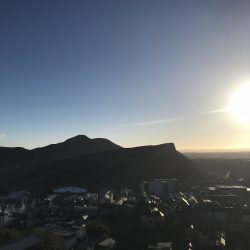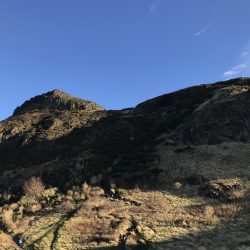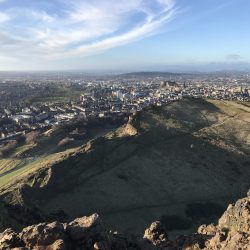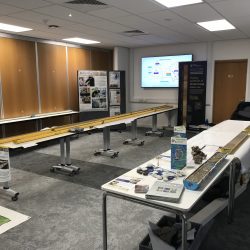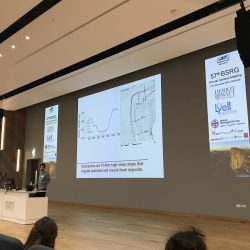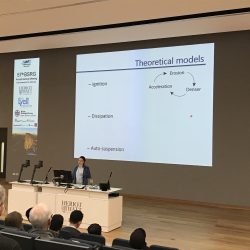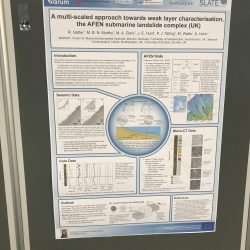ESR 5
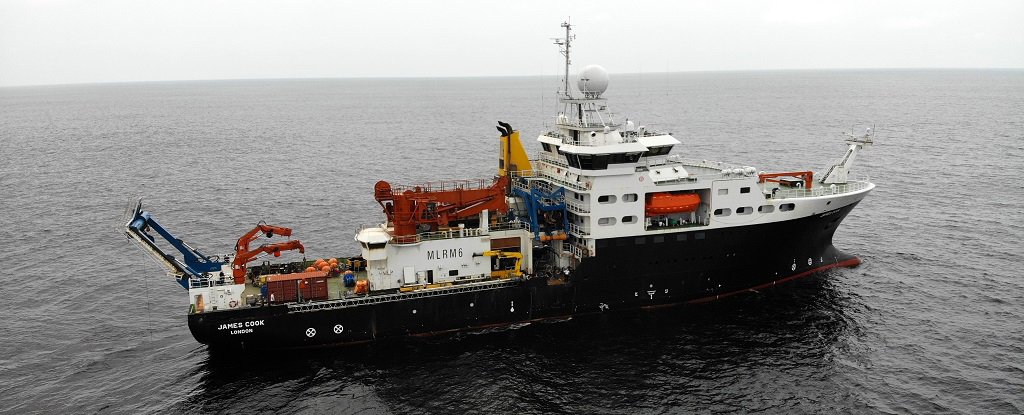
Research Expedition JC187 to the Congo Canyon
Kate Heerema (ESR5) & Maarten Heijnen (ESR10) | @ Research Vessel James Cook (28 August - 8 October 2019)
We, Maarten and Kate, were on a research cruise from August to October. Research cruises are an important part of our submarine sciences, as it is the main way to gather data. As the sub-marine realm remains vastly unexplored, each research cruise brings new and exciting information!
We were part of a larger group of scientists, from various universities and institutes, to gather more information on the Congo Canyon. This is a submarine canyon, directly fed by the Congo River. Previous studies have found that the Congo Canyon is active, and prolonged sediment gravity flows (“turbidity currents”) have been observed in recent times. With this research cruise, we aim to get more detailed information on the Congo Canyon and the current-day activity on the seafloor.
We departed from Cape Verde on the James Cook, a research vessel operated by the Natural Environment Research Council. The research cruise stared with 8 days of transit to the distal end of the Congo Canyon. During this time, we planned a lot of the scientific activities, got familiar with the equipment, and had daily science talks, where we all got the chance to present our ongoing research. With ongoing science for the weeks to follow, we managed to deploy instruments that will (hopefully) measure turbidity currents. The instruments will be recovered next year. We also mapped the seafloor canyon in more detail than ever before. Finally, we managed to get multiple sediment cores, so we can study the material carried by these flows. All of this data combined will give us the most comprehensive dataset thus far on the Congo Canyon.
This research fits well within our PhD projects, both of which revolve around present-day turbidity currents, via active monitoring, high resolution seafloor mapping, and seafloor sampling. Although most data processing and analysis of the Congo Research cruise will not fit in with the limited time left in our PhDs, we did manage to get a better understanding of data collection necessary for current-day turbidity current research.
Finally, during the cruise a Dutch newspaper published an article about the ongoing research on the James Cook. As we are both Dutch, it was an incredible timing to read about our research in a national newspaper whilst out at sea.
Ship
- RV James Cook
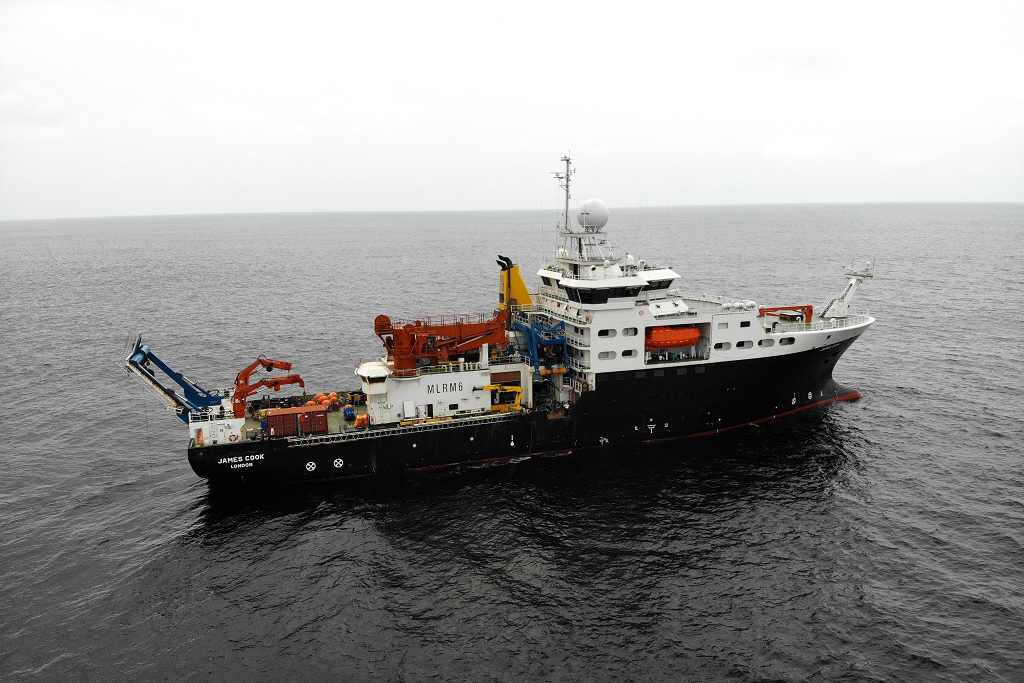
Impressions
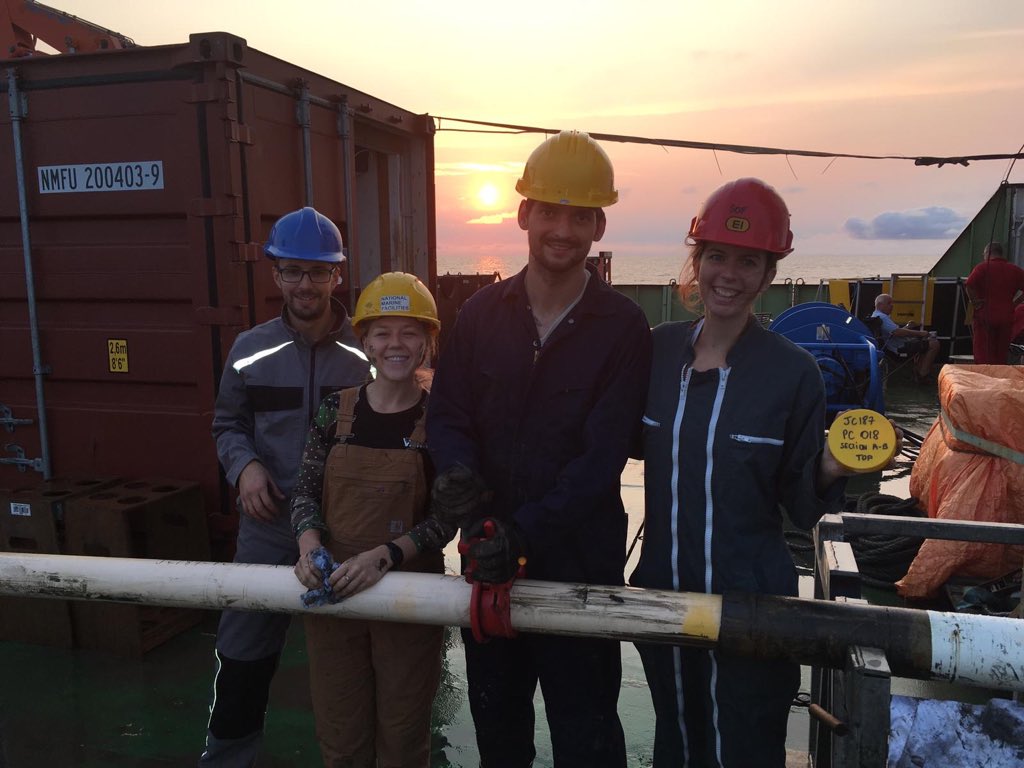
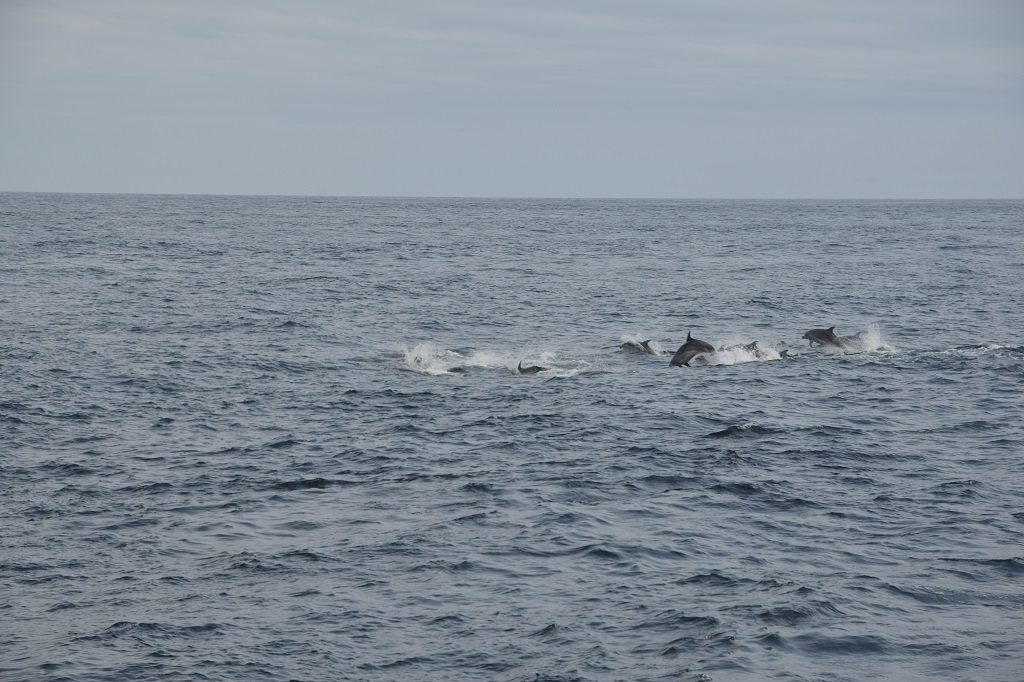
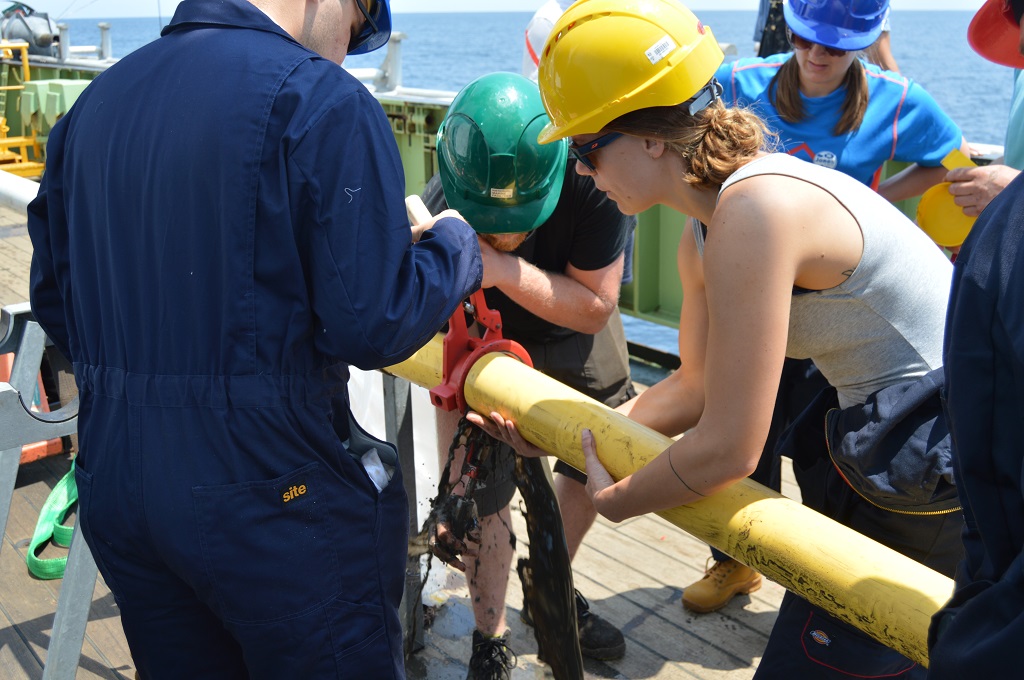
@ Sharing Geoscience Online (4-8 May) | 2020-05-18
SLATE goes EGU - Ready... set... TYPE!
ESR 2, ESR 4, ESR 5, ESR 6, ESR 9, ESR 10 | @ Sharing Geoscience Online (4-8 May 2020)
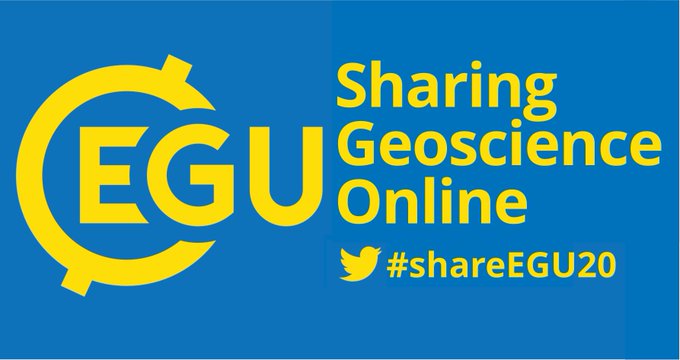
Everyone working in academic geoscience, especially in Europe, has the EGU week highlighted in their calendar. Even if not everyone has the luxury to travel to Vienna each year, we all have at least one colleague who is planning to present new work, new results, or new ideas at EGU. When the abstract submission deadline approaches we all feel involved, either directly or indirectly.
When we received the reminder about the upcoming deadline for session proposals in July 2019, it felt quite natural to try to organize a session to celebrate the last EGU of the SLATE project. No session focused specifically on submarine mass movements during EGU 2019, and the SLATE ESRs were scattered all over different sessions. For our last year, we wanted to organize something that could put all the SLATE ESRs and the submarine mass movements community together to present their work. We gathered five SLATE ESRs who were willing to contribute actively to the session’s organization, and with this motivation in mind, we started working on it.
First thing: you have to make sure that nobody else is organizing the same session. In our case, this meant getting in touch with the S4SLIDE community, which gathers many other researchers working on the topic of submarine mass movements. It took only one email to Lorena Moscardelli, the S4SLIDE chair, to get her full support for the initiative, including five travel grants for early career scientists to attend our session. We could not have had a better or more motivating start.
Everything from there on felt quite spontaneous: shape the session in a way that everyone working in the field could be involved, find a catchy session name, write the proposal, submit it. The session got accepted. We promoted it on our Twitter page (@itnSLATE ![]() ), making sure to be annoying enough that everyone working on submarine landslides knew about it. Eventually we received enough abstracts to have an oral and a poster session. Session time: late afternoon on Friday... Not ideal. Some hard negotiation with other conveners and the organizers later, the new session time: Monday afternoon. We could not have asked for a better outcome.
), making sure to be annoying enough that everyone working on submarine landslides knew about it. Eventually we received enough abstracts to have an oral and a poster session. Session time: late afternoon on Friday... Not ideal. Some hard negotiation with other conveners and the organizers later, the new session time: Monday afternoon. We could not have asked for a better outcome.
Then, the unexpected happened. Since everyone realized the COVID-19 pandemic was a serious threat, it was clear that it would somehow affect the conference week in Vienna. This bad feeling was confirmed by the end of March: “No EGU General Assembly in 2020, see you in 2021. BUT…we will try something different. This year, the EGU will be an online event, free and open to everyone”.
Honestly, the initial expectations were not so high, but as new details about the online conference were revealed, the enthusiasm started to increase. By mid April, it was clear that we were going to be pioneers of something that could represent a big innovation not only for EGU, but for the entire geoscience community: a virtual conference where thousands of people could talk about science. A drastic reduction in carbon emissions and no more worring about travel budgets. A potential opportunity to reach a larger number of scientists, and a chance to share our presentations beyond the geo-nerds who attend EGU in-person. In other words, there was potential for a scientific communication and outreach revolution.
We needed to make sure that the authors in our session were as motivated as we were. We got in touch with them and explained the importance of being part of such an exciting experiment. In the end, 12 out of the 20 original presenters uploaded their presentation materials ("displays"), and discussed their research on a live chat with more than 120 attendees. The level of engagement was unexpected: a two hour long active discussion, a multitude of specific and open questions, debates. Everyone could notice a considerably more dynamic environment than a regular oral session.
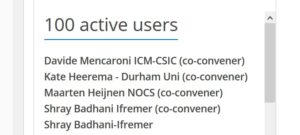
There is no doubt that this forced EGU online edition has been an eye-opener and a potential game-changer for future conferences. The benefits of such a format are obvious, as are the limitations and aspects which could be substantially improved given more organization time. The pros are an answer to years of discussion on how to make this conference more open, international and sustainable. In the last few years we have all seen a multitude of geoscientists travelling the whole continent by train, posting their adventures during their journey on social media. The 2020 edition showed that it is possible, and perhaps more realistic than previously thought, to attend the conference from home. Can you motivate people who are not geoscientists to travel to Vienna, pay for their participation, just to follow the few sessions which are understandable to a non-expert audience? Difficult. However, if you can access science in the comfort of your home, more ordinary people can and will tune in, and scientists will find a wider audience to discuss their discoveries with.
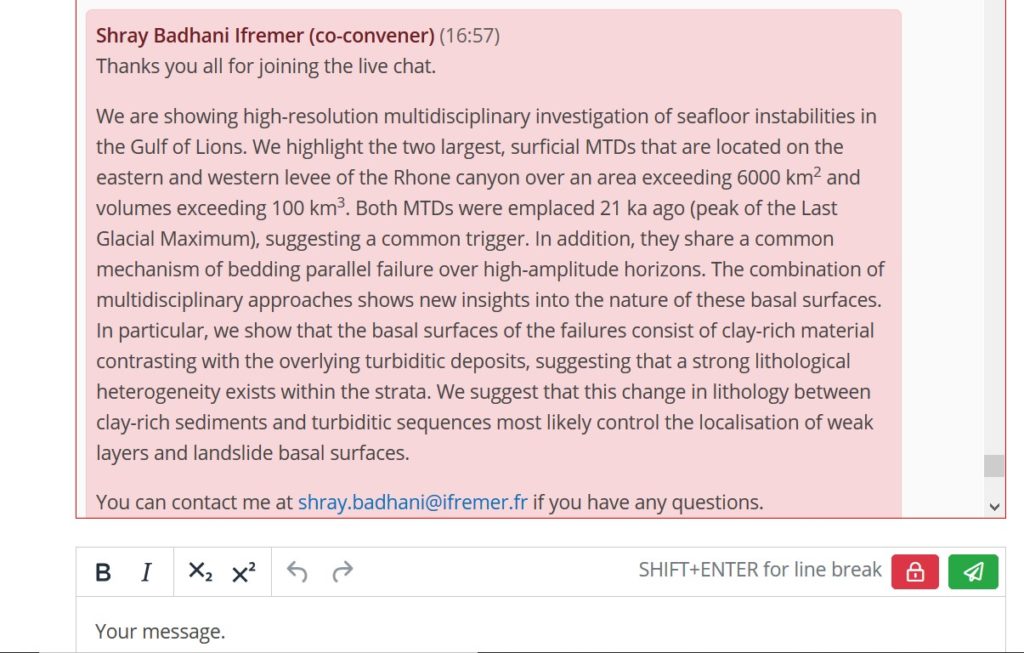
There were also limitations. The most obvious drawback is the lack of in-person interaction. As many of us experience during a regular EGU, there is no better networking than walking around posters, holding a beer and having informal conversations. As this is our natural way to act. Additionally, as everyone can attend from home, the time zones become more problematic and might exclude scientists from sessions they wish to attend. Finally, it requires stable internet access that not everyone has access to.
What if future editions allow authors to present through sharing screens online and explaining their research by talking, instead of writing? How about answering questions by voice, as we have seen in many Instagram or YouTube videos during this quarantine period? What if there was the possibility to create private chat or video-call rooms, where a private interaction between people is possible? Considering the huge online traffic of the online event, this was clearly not possible to set up in little more than a month. Nevertheless, does it sound so unrealistic to do in a one-year timeframe? Finally: is it sustainable to set up such a virtual event free of charge or at a very accessible cost?
There are many issues and challenge to address, but none of them seem impossible to overcome. The EGU Sharing Geoscience Online have shown an effective alternative to gather together thousands of scientists without making them travel, thanks to the creativity and the hard work of the organizers. It let us believe we saw the (much needed) future of conferences.
Is the future already here, or will we see each other in Vienna next year?
The EGU Session NH5.6 – Subaqueous mass movements: triggers, dynamics and hazards conveners.
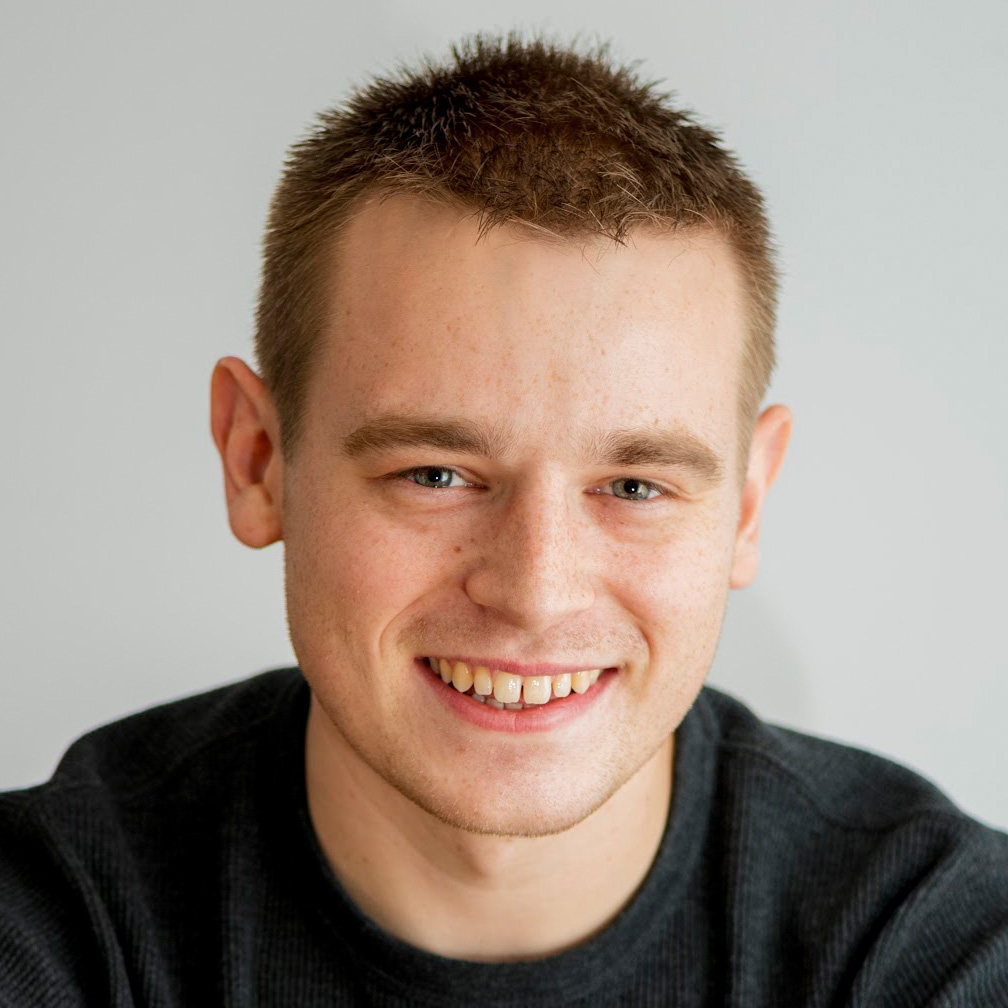 Jonathan Ford
ESR2
Jonathan Ford
ESR2
I presented an example of using seismic diffraction imaging to better image the internal structure of submarine landslide deposits. Several SLATE members were involved in the acquisition of this data during the INSIGHT (Legs 1 and 2) cruises, particularly PIs Roger Urgeles and Eulàlia Gràcia.
As I had no idea what to expect from the new online format, I simply uploaded the slides that I would have presented in Vienna. During the live-chat I introduced the presentation with a few sentences, the audience spent three minutes reading the slides and then five minutes of text-based discussion followed. The discussion was a little frantic - an oral presentation is nerve-wracking, but you never have to respond to several questions simultaneously! In hindsight I would have prepared fewer slides or an extended poster, similar to the existing PICO format at EGU. But I do think the informal chat allowed people to ask questions which they might not have asked during an oral presentation, and there was some good discussion and good points raised for all the presentations.
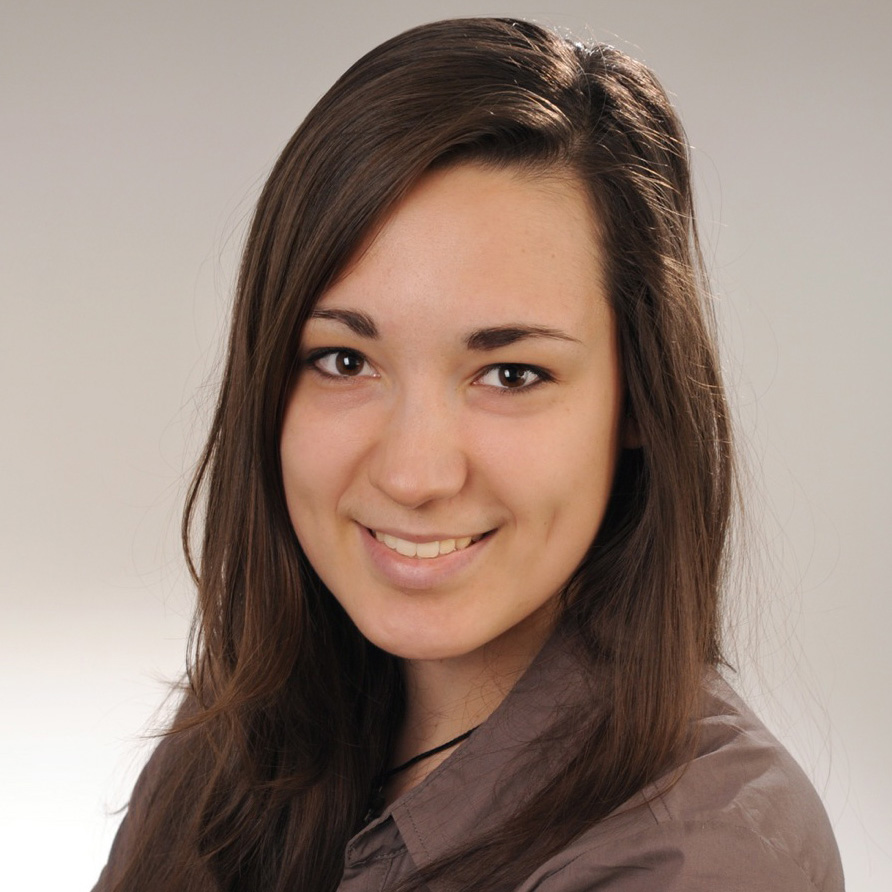 Ricarda Gatter
ESR9
Ricarda Gatter
ESR9
“One of the most interesting and stressful experiences – and I was just reading the chat!”
I was not planning on joining the EGU General Assembly this year, as it was scheduled right in the middle of my secondment in Southampton. Well, plans change and I got the opportunity to follow this year’s conference after all. In particular, it allowed me to join the great session convened by Davide (ESR 6), Shray (ESR 4), Kate (ESR 5), Maarten (ESR 10) and William (ESR 12) - Subaqueous mass movements: triggers, dynamics and hazards. Looking back, I do not know if it was the best or most stressful experience ever 😀 It was amazing that we could chat – quite literally, in a chat portal – about ongoing science, ideas and controversies. I have to admit, however, following the ongoing discussion was also sometimes challenging – my highest respect to all the presenters and conveners! I think as a whole it was a great opportunity to be able to discuss science. Nevertheless, I am looking forward to the next conference – hopefully back in Vienna.
Location- Sharing Geoscience Online
- S. Badhani, ESR4
- K. Heerema, ESR5
- D. Mencaroni, ESR6
- M. Hejinen, ESR10
- W. Meservy, ESR12
- J. Ford, ESR2
- S. Badhani, ESR4
- D. Mencaroni, ESR6
- S. Collico, ESR8

Kate’s 4-month secondment at NGI, Oslo
Kate Heerema (ESR5) | @ NGI Oslo, Norway (March - June 2019)
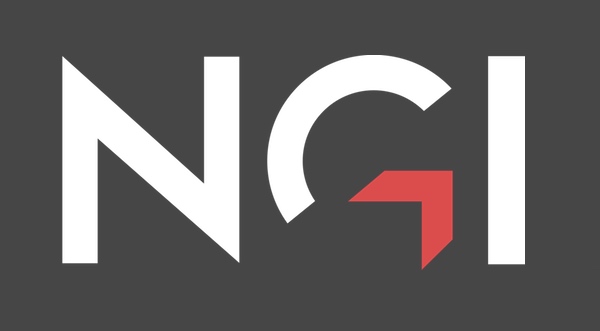
From March to the end of June, I spent my time not in Durham, but in Oslo for my secondment at NGI. Over the 4 months, I tried to learn as much as possible about numerical modelling. Numerical modelling can be described as follows: using a variety of equations that form a “rulebook”, and given some standard input values, the computer calculates what the likely scenario is. However, there are usually some unknown variables, simply because we don’t have the data and rely mostly on theory! The system can be quite sensitive to these unknowns – a tiny change of the value can have major consequences for the model output.
Because I was starting from scratch, there was a steep learning curve for me to get even slightly familiar with numerical modelling. Eventually, we set up a model using open source software for computational fluid dynamics – OpenFOAM. With lots of help from Matti Rauter (ESR14), we managed to set up a basic model after 14 days. Although this was far from bug-free, it did enable me to gain an understanding in numerical modelling – including its inherent and continuous debugging. We have now managed to set it up in such a state that I can continue with the model implementation when I get back to Durham.
To me, this 4-month secondment embodied everything possible within SLATE; where we combine knowledge and expertise and try to build bridges between different fields. This is a unique opportunity to combine the expertise of scientists that are usually very segregated. My background is in direct, in-field measurements of turbidity currents. At NGI, the main task was to see if we could translate these measurements into a model that can predict the patterns we see in real-life. Ultimately, the goal is to set up a model that can reproduce real-life turbidity currents, and thereby work towards mitigating risks associated with these hazardous events. However, in order for that to work, the physics and variables need to be accurate enough to capture the complicated reality. In order to do so, we need in-depth knowledge of both the numerical model and the geology.
My secondment at NGI has been a great way to integrate into Norwegian life. All the people I have worked with over the last few months at the institute have been incredibly welcoming. I also got amazing insights into Norwegian culture (e.g. Vaffel fredag, “Waffle Friday”, is simply a great tradition!), and learnt that it actually does matter which wax you put under your cross-country skis… I am especially thankful to the colleagues that showed me the best bits of Oslo (and surroundings)!
My four months in Oslo also provided me with the opportunity to explore Norway. Oslo is an amazing city – in many ways quite different to Durham. Both, however, have a feel for the outdoors, with close proximity to great nature. Here in Oslo, I was able to go cross-country skiing just by taking the metro; outdoor climbing with a view over the city; and swimming in the Oslo fjord (both in winter and summer). The long weekends in spring made it possible to go tour skiing near Gaustatoppen over Easter, and hiking in Rondane over “Pinse”. I finished off my secondment with a couple of weeks of holiday in Tafjordfjella and Åndalsnes; where I experienced both winter and summer within one week. Åndalsnes was also an interesting place to go as a geoscientist: the Mannen (“The man”) mountains nearby contain a section (Veslemannen, “The little man”, which has a volume of 120-180,000 m3) that is unstable. Veslemannen has been moving and predicted to collapse since 2014, and has kept locals, geoscientists, civil emergency response teams in Norway busy ever since.

- NGI Oslo, Norway






@ Vienna, Austria (07 – 12 April 2019) | 2019-07-23
A GUIDE AROUND EGU 2019
ESR1, ESR 2, ESR 3, ESR 4, ESR 5, ESR 6, ESR 7, ESR 8, ESR 9, ESR 12, ESR 13, ESR 14, ESR15 | @ VIENNA, AUSTRIA (7-12 April 2019)
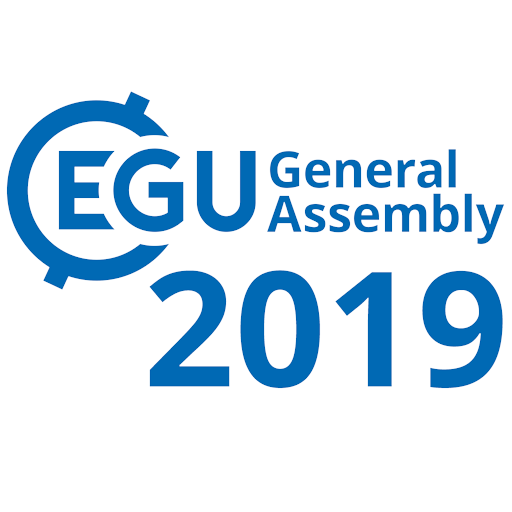
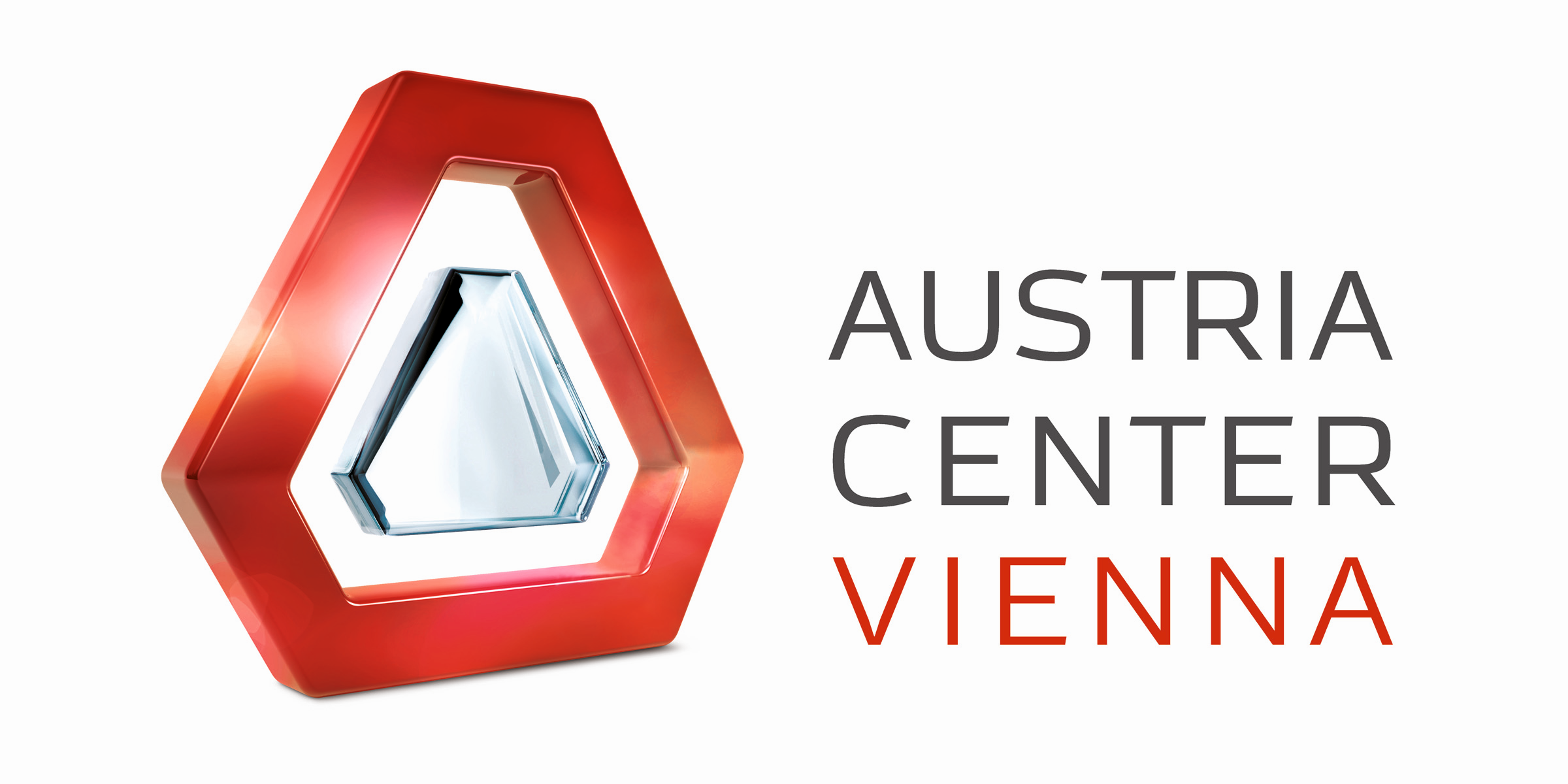
“The EGU General Assembly 2019 was a great success with 5,531 oral, 9,432 poster, and 1,287 PICO presentations that were attended by 16,273 scientists from 113 countries” (Copernicus Meetings, 2019).
SLATE was well represented with 12 PhD candidates, PIs (Achim Kopf, Michael Clare, Carl Harbitz, Finn Lovholt, Michael Strasser) and Aggeliki Georgiopoulou from the advisory board presenting their work.
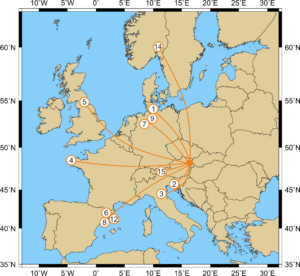
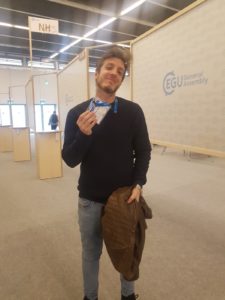 Presenting our work
Presenting our work
Rachel, Jonathan, Tugdual, Shray, Kate, William and Matthias drew crowds of people into the lecture rooms with their amazing presentations. They spoke on a variety of topics; covering different aspects of turbidites and their evolution, contourites and submarine landslides.
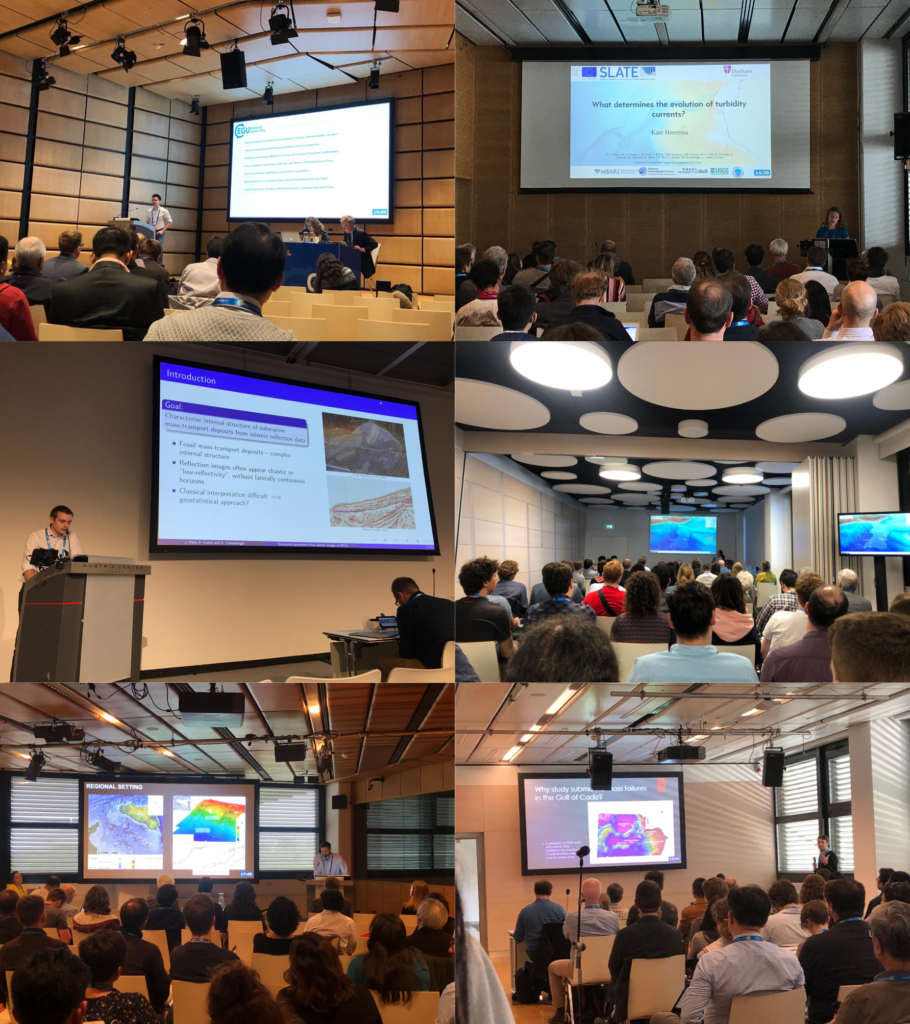 “I was very happy to be able to present my work at this conference, as it gives an occasion to present our work in front of a wide audience with very diverse backgrounds. I came out with very good feedback and advice for my work.” (Tugdual Gauchery, ESR 3)
“I was very happy to be able to present my work at this conference, as it gives an occasion to present our work in front of a wide audience with very diverse backgrounds. I came out with very good feedback and advice for my work.” (Tugdual Gauchery, ESR 3)
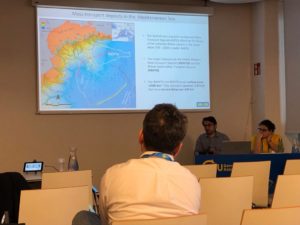
„It was my first time at the EGU and it was overwhelmingly large. I had the opportunity to talk to several researchers after my talk – it is always good to get feedback on both the positive and negative parts of ones research.” (Shray Badhani, ESR 4)
Davide, Ting-Wei, Stefano, Ricarda and Maddalena presented their work in the poster sessions and attracted a lot of people.
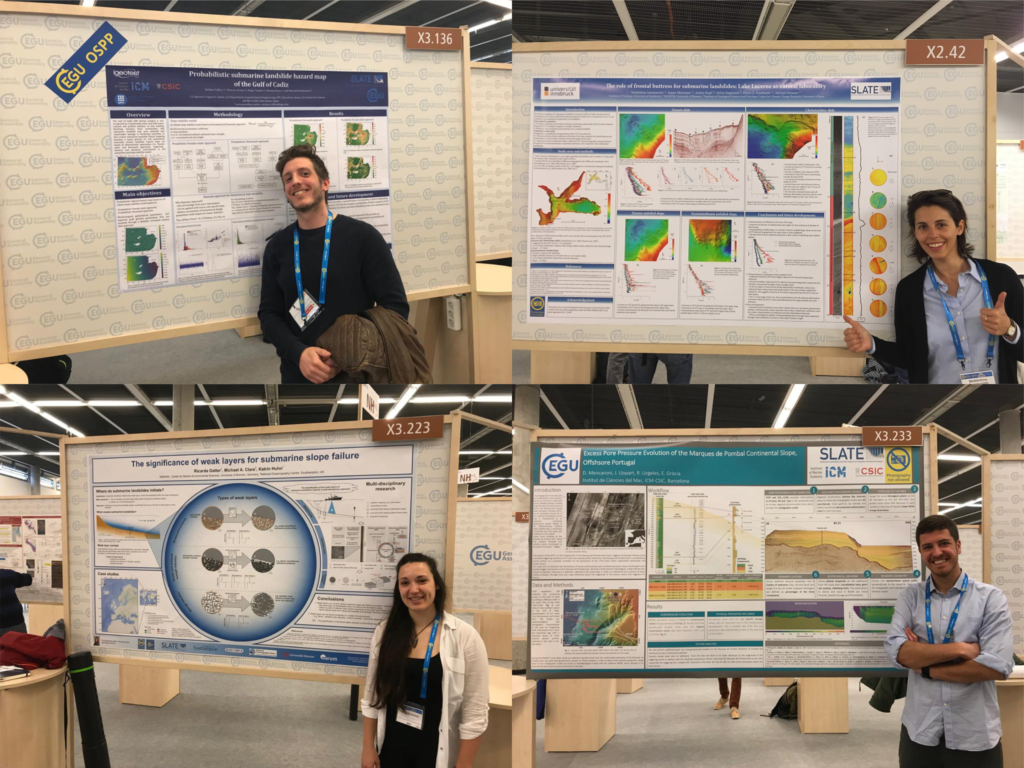
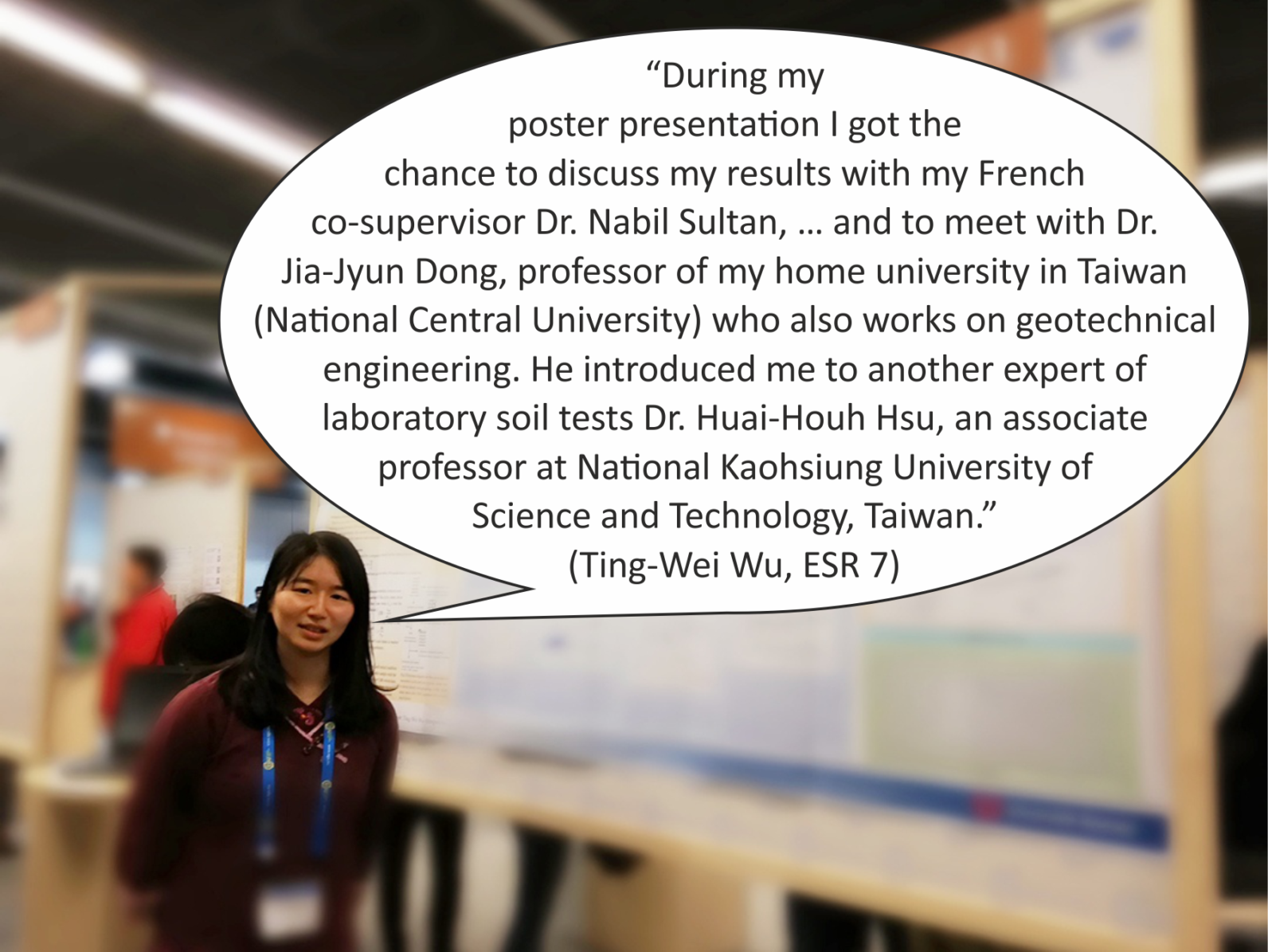
“Presenting a poster at a conference like EGU is a great learning opportunity for any early career scientist. On one hand, I had the chance to discuss my research with people working in the same research field and to meet scientists I had only known from reading their papers. What surprised me the most, however, were the questions I got from scientists specialized in completely different fields, looking at my project from a prospective I do not usually consider. People who were just randomly walking around posters asked me the most challenging questions, highlighting issues that I never considered before, but that helped me to have a more complete understanding of what I am studying.” (Davide Mencaroni, ESR 6)
And learning new thingsApart from presenting our own work, we took the opportunity to learn more about work from outside our own fields. Alongside the traditional poster and oral presentations, EGU also hosts so called “PICO” presentations (Presenting Interative COntent) and short courses on more general topics in science.
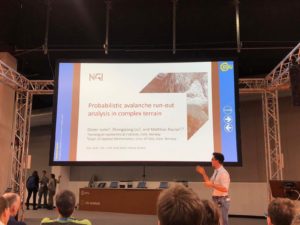
“One thing that I really enjoyed about EGU were the PICO sessions. PICOs start with quick-fire two minute presentations from each researcher to briefly introduce their topic and state their main conclusions. After, everyone moves across to the interactive area, where each presenter has their own workstation and large screen. This really facilitates discussion and allows for more flexibility that a standard poster or talk. For me, the PICO sessions are a great way to be introduced to an unfamiliar area, because the results are presented up front and you get to see a rapid cross section of the state-of-the-art in a particular field.” (Jonathan Ford, ESR 2)
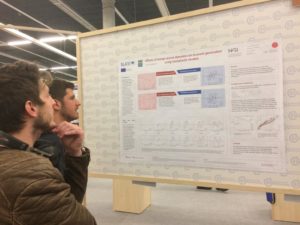
“It was a great opportunity to get some insights from overlapping, but vastly different, fields. For instance to see what the current state of research in Powder Snow Avalanches is, or to get some background knowledge on numerical modelling in turbidity currents as preparation for my secondment at NGI.” (Kate Heerema, ESR 5)
“One of the most exciting sessions I attended was on the recent tsunami events in Sulawesi and West Java (Krakatao), Indonesia (Blog). Although most of the group seemed to agree that these tsunami events were, in fact, submarine landslide-related, there was some surprisingly lively pushback from at least one seasoned researcher. I think the overall tsunami community seems to be experiencing a small paradigm shift in how they think about tsunami hazards. I also enjoyed stopping by different poster sessions related to tsunami hazards and had some great networking conversations with a group of researchers from Singapore about their work and how it relates to some tsunami survey work that I previously did as a master’s student” (William Meservy, ESR 12)
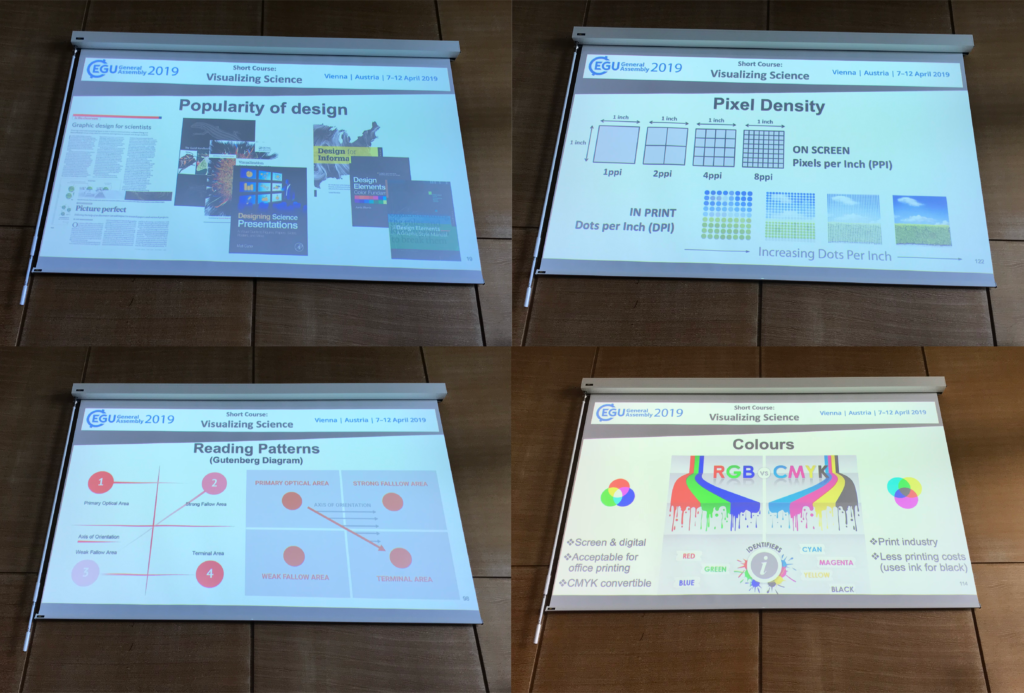
“I went to three courses, of which I especially liked the “Visualizing Science” course. I think we often forget how important it is to present our research to other scientists, as well as to the general public.” (Ricarda Gatter, ESR 9)
“The quantity and variety of soft skill courses available at the EGU undoubtedly adds value to the conference. I attended a course about communicating science with the general public and enjoyed hearing different perspectives about what effective communication looks like, and how that can take different forms. One point that stood out was the value of knowing when it is worthwhile to get the assistance of people who are trained in communication, such as journalists, to communicate significant results.” (Rachel Barrett, ESR 1)
Need help to find your way around? - use the EGU AppFinding your way around a big conference such as EGU can be difficult. Luckily, there was an app available in which you could find all the contributions and put together your personal programme. In addition, we kept everybody up to date with our own contributions via Twitter.
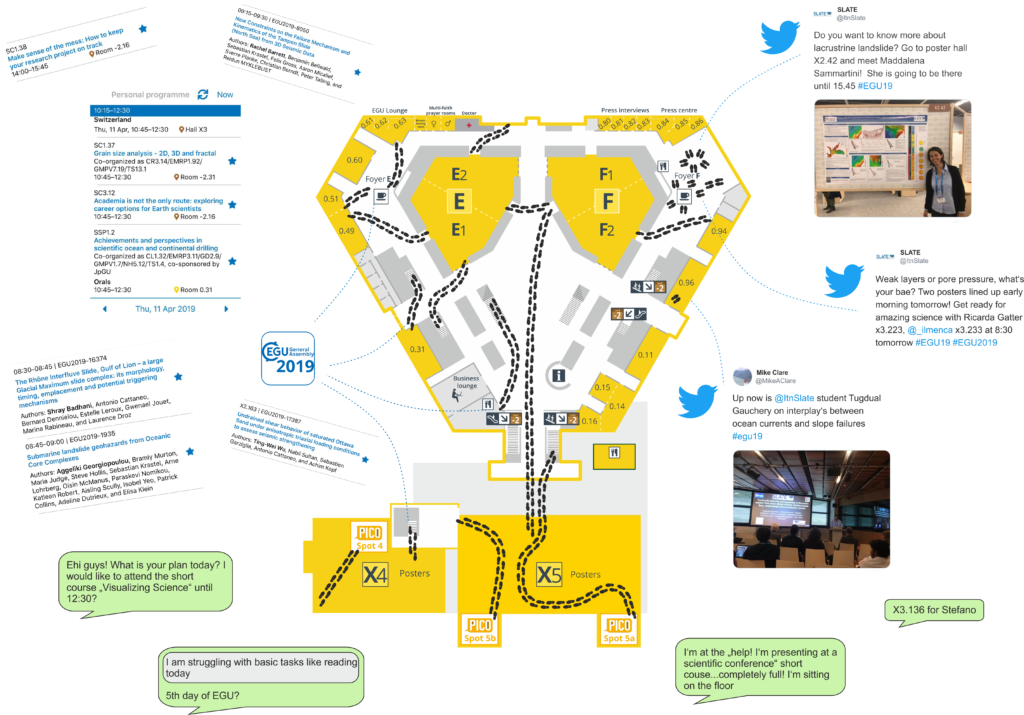
“I knew that EGU is the most important Geoscience conference in Europe, but I didn’t expect something like this. It was difficult not to be impressed by the amount of different topics and talks, but above all, I was struck by the hundreds of posters that everyday are hanging in these huge rooms.” (Maddalena Sammartini, ESR 15)
To sum it up“I was honestly impressed by the EGU conference. It was the perfect environment to discuss a wide range of research topics and learn about other researchers’ PhD experiences.” (Stefano Collico, ESR 8)
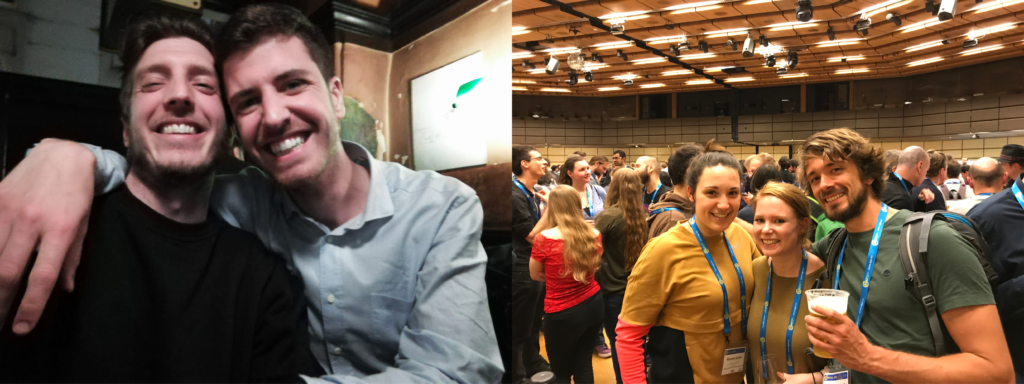
“It is such a great international experience. I even met my friends from my home university in India. I am already looking forward to EGU2020.” (Shray Badhani, ESR 4)
“One of the highlights of the experience for me was that I was lucky enough to be able to bring my wife and kids along to explore Vienna. In the evenings, we were able to walk in the city together and eat a lot of goulash and Viennese chocolate cake” (William Meservy, ESR 12)
“EGU is an essential event for every geoscientist working Europe. It is the perfect opportunity to meet new people with common interests, present the latest progress of your work, get valuable feedback and to foster old friendships” (Matthias Rauter, ESR 14)
EGU - Let's meet again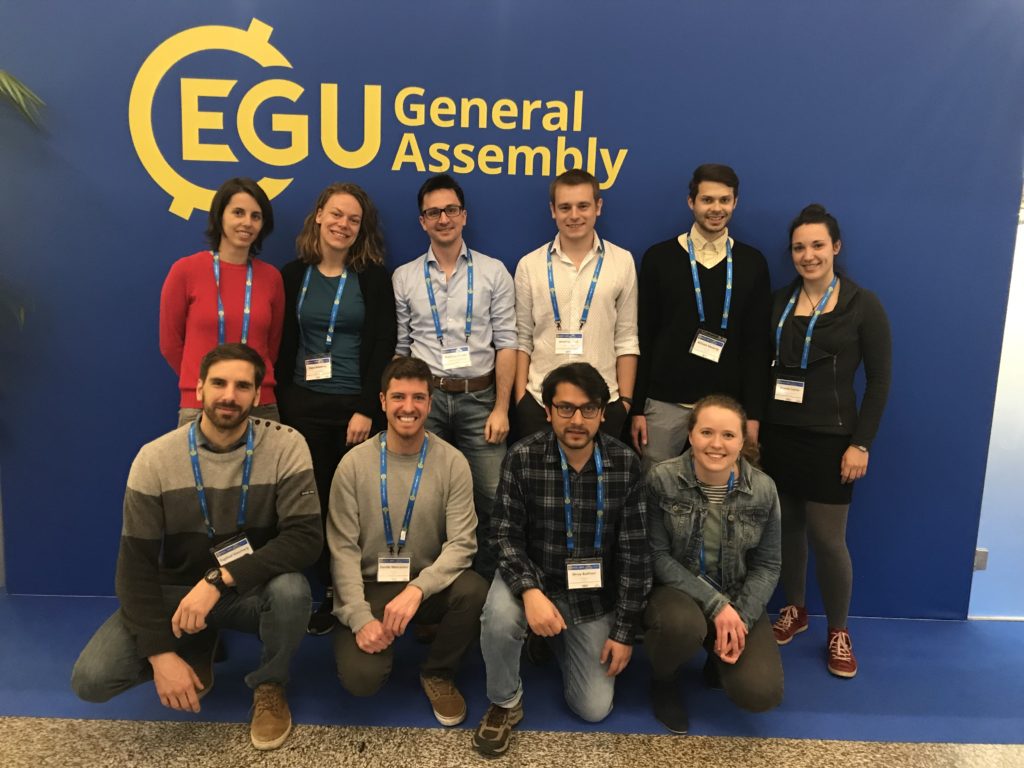 Location
Location
- Vienna, Austria
 Conference Schedule
SLATE participants
ESRs:
Conference Schedule
SLATE participants
ESRs:
- R. Barrett, ESR1 [Talk]
- J. Ford, ESR2 [Talk]
- T. Gauchery, ESR3 [Talk]
- S. Badhani, ESR4 [Talk]
- K. Heerema, ESR5 [Talk]
- D. Mencaroni, ESR6 [Poster]
- T-W Wu, ESR7 [Poster]
- S. Collico, ESR8 [Poster]
- R. Gatter, ESR9 [Poster]
- W. Meservy [Talk]
- T. Zengaffinen, ESR13 [Poster]
- M. Rauter, ESR14 [Talk]
- M. Sammartini, ESR15 [Poster]
- A. Kopf, PI of ESR7 [Poster]
- M. Clare, PI of ESR10 [PICO]
- C. Harbitz, PI of ESR13
- F. Løvholt, PI of ESR14 [Poster]
- F. Løvholt, PI of ESR14 [Convener]
- M. Strasser, PI of ESR15
- A. Georgiopoulou, Advisory Board [Talk]
@ Edinburgh, Scotland (18-19 Dec 2018) | 2019-01-24
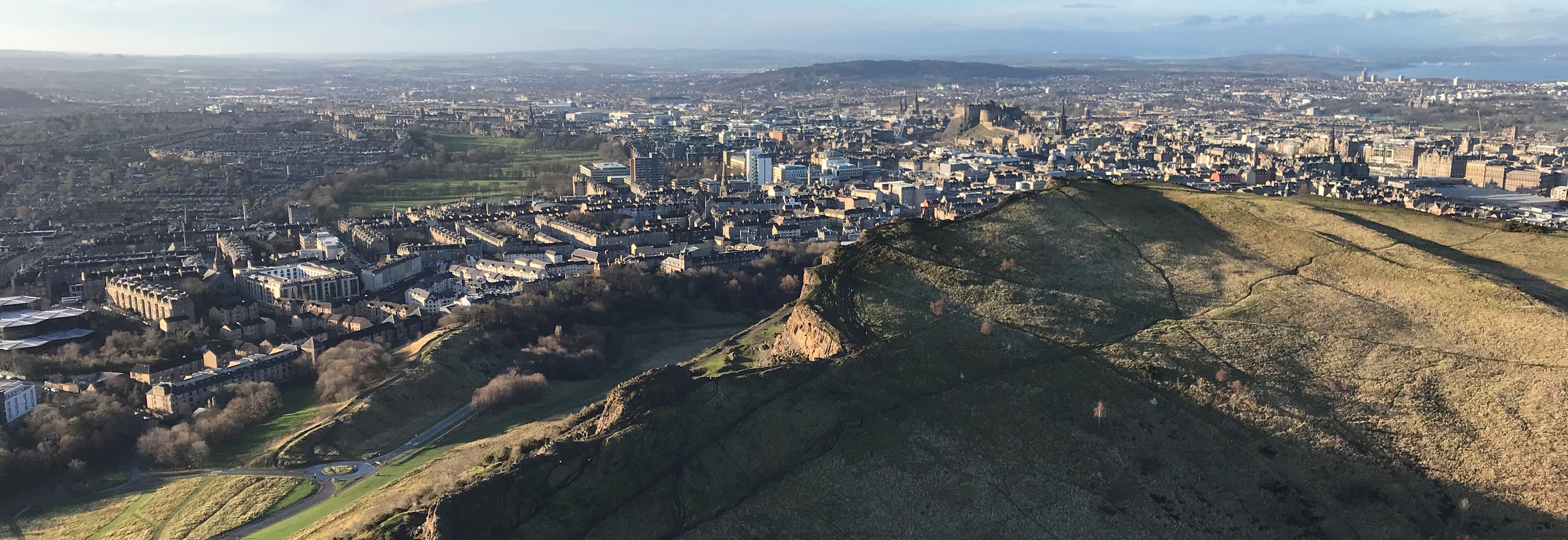
ESRs' experiences of the "British Sedimentological Research Group Anual Group Meeting 2018" (BSRG2018)
Kate Heerema (ESR5), Ricarda Gatter (ESR9), Maarten Heijnen(ESR10) | @ Edinburgh, United Kingdom (18-19 December 2018)
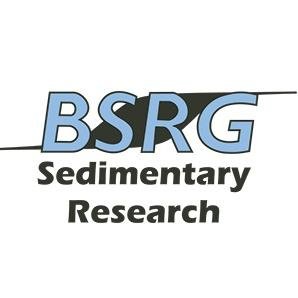
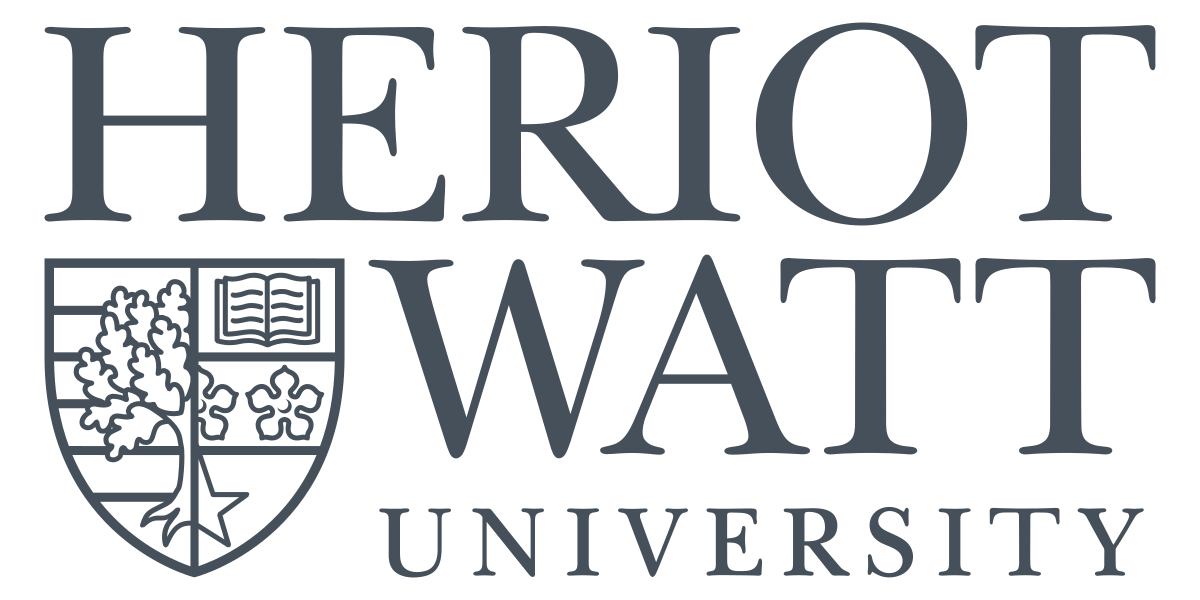
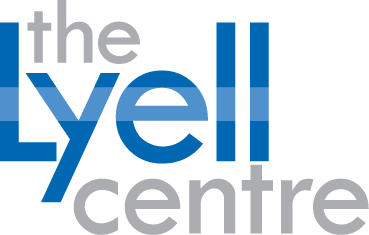
This year’s conference for the British Sedimentological Research Group (BSRG) was held in Edinburgh, just before Christmas. Kate (ESR 5), Ricarda (ESR 9) and Maarten (ESR 10) represented the PhD students from SLATE, and Mike Clare was the PI present for this British based sedimentological conference. BSRG is a conference that predominantly attracts UK-based sedimentologists, with a few Dutch, Norwegian and German sedimentologists culminating to about ~100 scientists gathering. It is a relatively small conference, with four parallel sessions divided over two days. Ricarda gave a poster presentation, Kate an oral presentation, and Maarten did both an oral and poster presentation. BSRG is a great way to get your research and (wild) ideas out there, receive feedback and improve your ideas and plans!
The conference also has workshops and field trips preceding and following. Ricarda participated in the pre-conference workshop “Contourites: seismic and sediment characteristics”, organised by Dorrik Stow, Zeinab Smillie and Uisdean Nicholson from Heriot-Watt University, Edinburgh. At the beginning, the participants got a brief introduction to the terminology and relevance of contourites before they could examine contourites themselves based on seismic data and core material from selected case studies. Kate went to a workshop where various aspects of sedimentological datasets were shown. The core store showed an excellent record of sedimentological rock sequences found across Scotland. Flume tanks show sedimentological structures being formed in actions, creating ripples, and dropping high density fluids in the tanks. And finally, digging in closer, we used microscopy to get into the nitty gritty of sediments.
All-in-all, a pretty successful workshop with lots of new information, networking and seeing old friends.
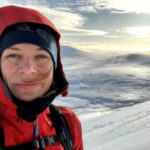 Kate Heerema
ESR 5
“For me it was the first time attending the BSRG conference, but not the first conference of my PhD. The great thing about the BSRG conference is, I think, the small scale. After my presentation on my current chapter, I got some great feedback that has really helped improve my research. In addition, as it is small scale, it is far less intimidating, and meeting new people is a lot easier!”
Kate Heerema
ESR 5
“For me it was the first time attending the BSRG conference, but not the first conference of my PhD. The great thing about the BSRG conference is, I think, the small scale. After my presentation on my current chapter, I got some great feedback that has really helped improve my research. In addition, as it is small scale, it is far less intimidating, and meeting new people is a lot easier!”
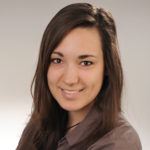 Ricarda Gatter
ESR 9
“BSRG was the first conference I went to and I really enjoyed it. Thanks to BSRG being a smaller conference, it was easy to interact and get to know new people. Everybody was extremely friendly and I gained a lot of valuable knowledge from the presentations, posters, and discussions. In addition, I learned a lot about contourites during the pre-conference workshop. This new information will definitely help me a lot in analysing my data, which also comprises contouritic deposits. All in all, it was a wonderful experience, which significantly enhanced my knowledge of sedimentology and allowed me to meet nice people in a beautiful city.”
Ricarda Gatter
ESR 9
“BSRG was the first conference I went to and I really enjoyed it. Thanks to BSRG being a smaller conference, it was easy to interact and get to know new people. Everybody was extremely friendly and I gained a lot of valuable knowledge from the presentations, posters, and discussions. In addition, I learned a lot about contourites during the pre-conference workshop. This new information will definitely help me a lot in analysing my data, which also comprises contouritic deposits. All in all, it was a wonderful experience, which significantly enhanced my knowledge of sedimentology and allowed me to meet nice people in a beautiful city.”
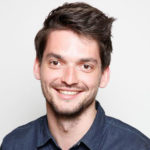 Maarten Heijnen
ESR 10
“This was the third time for me attending the BSRG AGM conference. I have, since last year, also became a postgraduate representative for the BSRG, which means that I organise workshops and fieldtrips for other early career scientist. I’m starting to know more and more people within the BSRG community, so this conference was very nice for me. I presented a poster on the first chapter of my PhD and gave an oral poster on the second chapter, which was the first time ever presenting my second chapter. Furthermore, I wanted to practise my poster presentation skills, which is something I think I am not very good at, so I decided to present my first chapter as a poster. I received useful feedback on my work and presentation skills, and had nice discussions with a lot of different people. See you next year BSRG!”
Location
Impressions
Maarten Heijnen
ESR 10
“This was the third time for me attending the BSRG AGM conference. I have, since last year, also became a postgraduate representative for the BSRG, which means that I organise workshops and fieldtrips for other early career scientist. I’m starting to know more and more people within the BSRG community, so this conference was very nice for me. I presented a poster on the first chapter of my PhD and gave an oral poster on the second chapter, which was the first time ever presenting my second chapter. Furthermore, I wanted to practise my poster presentation skills, which is something I think I am not very good at, so I decided to present my first chapter as a poster. I received useful feedback on my work and presentation skills, and had nice discussions with a lot of different people. See you next year BSRG!”
Location
Impressions
